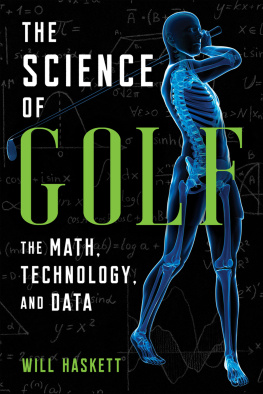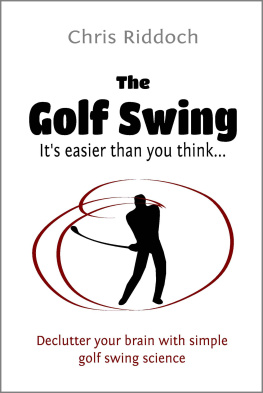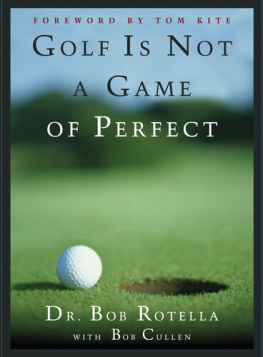

Copyright 2022 by Will Haskett
All rights reserved. No part of this book may be reproduced in any manner without the express written consent of the publisher, except in the case of brief excerpts in critical reviews or articles. All inquiries should be addressed to Skyhorse Publishing, 307 West 36th Street, 11th Floor, New York, NY 10018.
Skyhorse Publishing books may be purchased in bulk at special discounts for sales promotion, corporate gifts, fund-raising, or educational purposes. Special editions can also be created to specifications. For details, contact the Special Sales Department, Sports Publishing, 307 West 36th Street, 11th Floor, New York, NY 10018 or .
Skyhorse and Skyhorse Publishing are registered trademarks of Skyhorse Publishing, Inc., a Delaware corporation.
Visit our website at www.skyhorsepublishing.com .
10 9 8 7 6 5 4 3 2 1
Library of Congress Cataloging-in-Publication Data is available on file.
Cover design by David Ter-Avanesyan
Front cover illustration by Getty Images
ISBN: 978-1-5107-7185-7
Ebook ISBN: 978-1-5107-7186-4
Printed in the United States of America
CONTENTS
INTRODUCTION
With roots dating back to the mid-fifteenth century, golf has both the blessing and curse of being a sport with much history and evolution. And while the modern playing of the sport is arguably only two hundred years old, the fundamental goal of the game has remained the same as it is written in its official rules today of the United States Golf Association (USGA).
Golf is played by striking your ball with a club, and each hole starts from the teeing area and ends when your ball is holed on the putting green.
You should normally play the course as you find it and play your ball as it lies.
Simple enough, right? Golf s greatest giftthe ability for any player, of any age, or any skill, to be able to compete alongside each othercan often be the sports greatest source of consternation. How one gets the ball from teeing area to hole is as varied today as it was during its primitive origins on the Scottish coastline half a millennium ago.
The key to success at golf (in whatever measurement of success one aspires to reach) rests in understanding how a variety of forces are at play to make that ball (with a minimum diameter of 1.68 inches) move in the most efficient way via clubs (of varying restriction and construction) around a property of endless obstacles and altering conditions.
To some, this exercise is an art form. Many of the worlds golfers arrive at mastering their craft by feel. They are capable of maximizing their own abilities and the movement of their golf ball through repetition, experimentation, and muscle memory. Feel players have an organic connection with the game and seek to conquer it not through academic discovery, but rather with a more purist belief of unity with the sport and a link through time to golfers of generations past.
Many othersespecially with the technological and analytical revolution in the sport during the twenty-first centuryattack the game with as much information as possible. The modern golfer leaves no stone unturned in pursuit of the most efficient path to that hole (of 4.25 inches in diameter).
This book is not about which process is correct; it is simply about the process.
I have been around golf almost all of my life. I owe much of my successtangibly and immateriallyto the lessons learned from working in the golf business and playing golf both competitively and recreationally. Simple osmosis gave me enough understanding of the game, but the reality is that I was an ignorant amateur when it came to breaking it all down. Amateur, I should add, comes from the Latin word amator, which means lover. I love golf. I just didnt understand it the way I thought I did.
It wasnt until 2017, four years after I had started broadcasting golf on the PGA Tour full time, that my curiosity in the sport increased to where I wanted to peel back the many layers of the sport and understand it more.
In my pursuit of understanding how the best golfers in the world reach their goals, break records, and redefine the sport, I stumbled across a seemingly endless amount of ways in which those elite golfers, teachers, and analysts study the game to squeeze every drop of potential out of it and themselves.
This book aims to explore all of those areas, offering a glimpse not just in the what of golf, but the how as well.
I would be remiss if I didnt acknowledge that there are far more detailed and elaborate scientific studies of many of the principles and subjects discussed in this book. I had once, naively, thought this book would break down the formulas and function of several of the most fascinating studies, but quickly realized that my general knowledge puts me closer to the forward tees than the tips. Many are still referenced, and a few are even authored by the subjects who graciously gave up some of their time to be interviewed for this book.
Rather than chase those topics down a rabbit hole of intense evaluationand understanding beyond my own humble comprehensionthis book aims to give the reader a broad understanding of all of the scientific factors in play in the sport, and view them through the lens of some of the worlds best players and minds. Like golf itself, this exercise could be endless, but we want to keep up the pace of play.
Because what makes golf beautiful is also what makes it so different from reader to reader. Hopefully, you can get a better sense of the what and the how, and it leads to a better why for your game, and your scores!
CONTACT
Zero-point-five milliseconds. Written in more understandable terms: 0.0005 seconds. The golf ball interacts with the face of a golf club for approximately 0.0005 seconds. That is eight hundred times faster than the time it takes an average human to blink, and just sixteen times slower than the time it takes lightning to strike.
This incredibly short moment in time also happens to be the most important moment of the sport. For what happens in this 0.0005 seconds begins a domino effect of cause-and-effect reactions. It determines where the ball goes, where it lands, how it lands, and, most importantly, what the next shot will be. Ultimately, over the course of many 0.0005-second impacts, a golfer arrives at a score, represented by the total number of those impacts.
For example, in a four-hour round where a player shoots 80, the most important actions impacting that score of 80 take place for a combined time of less than half of a tenth of a second. Blink, and you miss the entire round of golf.
While golf has had numerous historical advances in its understanding and execution, none may have had more impact on how experts study (and teach) the sport than the introduction of the launch monitor in the twenty-first century. Prior to the technologys arrival in the sport, understanding contact of the golf club with the golf ball was empirically gathered by studying the result of that contact, not necessarily the cause. What did the ball do after contact? Not, what did the club do to the ball?
Radar and launch monitors moved the microscope away from the effect and showed us everything that was happening at the moment of causation... contact.
Popularized largely by brands like TrackMan, FlightScope, Foresight, and others, harnessing existing technology to study the interaction of the golf club with the golf ball, plus the subsequent flight of the ball after impact, has turned that causation discussion of the game in an opposite direction.
Next page














